Podcast: Play in new window | Download
Applying Permaculture – Show Notes
We talked about permaculture in Episode 101. But how does this thing called permaculture apply to real life? Today, we talk about how to apply permaculture in a way that it improves our life!
Today’s links: easylivingyards.com/episode103
- Gaia’s Garden by Toby Hemenway
- The Suburban Micro Farm by Amy Stross
- How permaculture could save California
- Tenth Acre Farm website
- Ask Ben a Question for Free!
What is permaculture and why does it matter to you?
- My definition of permaculture is a philosophy of working with, rather than against nature; of protracted and thoughtful observation rather than protracted and thoughtless labor; and of looking at plants and animals in all their functions, rather than treating any area as a single product system.”
- Design perspective inspired by nature using purposeful interventions to create resilient systems that require minimal long-term inputs for maximum sufficiency and yield
- Permaculture systems are designed to work along with land, ecosystems, and soil
- Permaculture is more a mindset and design perspective rather than a set of prescribed tools or processes
The Permaculture Prime Directive:
“The only ethical decision is to take responsibility for our own existence and that of our children” – Bill Mollison
Ethics of Permaculture
- Care of Earth
- Care of People
- Return of Surplus
Practically applying permaculture design
What does all this stuff mean?
How do I apply this lofty stuff to my yard?
- Begin by outlining what is important to you and your yard
- What are your ethics?
- How do you intend to live with purpose?
- Food production
- Habitat
- Retreat from society
- Native plants
- Use design principles as a guideline for design
- How to minimize inputs
- How to maximize yield
- Observe landscape and conditions
- What connections can be enhanced?
- How to catch and store energy or materials?
- What can perform multiple functions?
- Where do you interact most? How can this be enhanced?
- What does succession look like in your landscape?
- What renewable or biological resources can you utilize?
- What are existing problems in your landscape?
- What does a yield look like to you?
- Are there more creative ways to reach your goals?
- Where have you messed up? What can you learn from it?
- Take Responsibility
- Use of resources
- Impact of landscape
- Soil
- Chemicals
- Heat
- What our yard used to be
- How do we rectify previous scars?
We are about making tomorrow better than today.
We are about living with intent, purpose, and passion.
Permaculture serves as a tool to connect us to living with purpose and passion and making tomorrow better than today.
Applying Permaculture-ELY103
00:00:00 – 00:05:01
What’s up I’m Ben Hale and this is the easy living yards podcast. Creating Beautiful Yard should be easy. Let’s jump in create the Dream Yard. You deserve so you can enjoy more time doing what you love. Welcome TO EPISODE ONE HUNDRED. Three of the easy living yards podcast. Welcome back to another awesome episode guys. I’m happy to jump into today’s episode. It’s a continuation of episode one. Oh one if you guys didn’t listen to episode one. Oh one what is permaculture in? Why does it matter to you? I really suggest you go over to listen to that. I have linked to that in the show notes for today’s show. But you can also just go to easy living yards dot com slash episode one zero one and you can listen to that episode right there. Of course there’s always a link to itunes stitcher and other popular podcast feeds on my podcast page. So if you guys want to check out any previous episodes all of them are over at easy. Living yards dot com slash pod. That’s easy living yards dot com slash P. O. D. for those of you guys didn’t notice heaven gone to the website. It really suggests you guys check out easy living yards dot com. Hey let’s jump into today’s show. I don’t really want to spend too much time on announcements or things like that except for. Enjoy the weather guys. Hope you’re staying healthy. Enjoy the beautiful spring. That’s coming upon us here. And this is a perfect time to be talking about permaculture. I’m super enthused about permaculture. I love this topic this subject area this way of living and so. I really hope you guys kind of get some of that energy for yourselves and really try to apply some of these permaculture principles in your life and so- episode one. Oh one was was kind of an introduction to what is permaculture. Do have very very brief introduction here in case you guys want to refresh her or in case against in here that show again just you go listen to the show but it was a bit more of a you know like. I didn’t want it to make like lecture. You’re anything but I. It was kind of a heavier type of discussion. About what is permaculture and how it can really had its core changed the way we live in change our world. That’s really how powerful this permaculture concept is to me and how I perceive it to other people that are really into permaculture. Feel the same way about it. It’s kind of in a way. It takes all these ancient thoughts and ideas and combines them together into a more holistic approach in a more deliberate and pragmatic approach and takes all those ancient things and makes it this this path to the future of sustainable living in holistic living in low impact. Living in a way that’s really beneficial to us and our planet which is why I love it so again just a quick definition. Ish type thing as permaculture is a philosophy of working with rather than against nature. It’s a a protracted and thoughtful observation. Practice rather than protracted and thoughtless labor of looking at plants and animals in all their functions rather than treating any area is a single product system. Now I’m slightly prayer. Phrasing a quote from One of permaculture founders named Bill Mollison. Bill passed away a few years ago but one of his. Co Founders. David Holmgren Both Australian natives. He’s still around. Still Teaching permaculture in has a very productive working permaculture farm as demonstration as well now taking that kind of lofty definition in some ways maybe hard to digest hard to figure out how to apply concept in my own words that maybe a bit more digestible is. Permaculture is a design perspective inspired by nature using purposeful interventions to create resilient systems that minimize long-term inputs for maximum sufficiency in yield so to say that again. It’s a mouthful. But each word is important. Permaculture is designed perspective inspired by nature using purposeful interventions to create resilient systems that require minimal long-term inputs for maximum sufficiency yoed so these systems are designed to work along with land and ecosystems in soil and using basically really permaculture is a mindset in a design perspective rather than said of prescribed tools and processes. So that’s kind of I. Guess kind of spilling out stuff. That’s in my head of how I perceive this concept and hopefully You know having that overarching view in summary of episode one.
00:05:01 – 00:10:06
Oh one today. We can talk about practically applying permaculture design in our lives. This is really anywhere you live any life setting you’re in Life Stage This can really. You can apply these concepts in different ways to your life so this isn’t just about food production although that is most often what people think of in most often how permaculture is applied and so that’s kind of going to be our focus today but really think about how permaculture concepts can also be applied more broadly. So let’s think about practically applying permaculture design. What is all this stuff mean right so we talked about. I talked about these. These overarching ethics of permaculture the prime directive in the principal’s fourteen principles of permaculture. I’m not going to go into all those checkout episode one on one for those instead but I will at least highlight the prime directive in ethics. Because those are really the core principles and principles right. There’s fourteen of those. They’re the core founding I guess overarching concepts that define in steer all of permaculture practice so the prime directive is the only ethical decision is to take responsibility of our own existence and that of our children. Boom right okay. The ethics of permaculture there are three ethics care of Earth. Care of people in return of surplus. Okay at talked more deeply about each of these in last into episodes ago. So episode one. Oh one today. We’re going to take those principles. The principles end those founding directives in the ethic to really make it more granular and instead of having tons and tons of practical examples. It’s hard for me to pull all this together and it was. I figured this would be like a three hour episode. So I’m going to go a little bit a little bit glossy over some of this just so we can cover a lot of ideas and concepts for you so you can figure out how things can be best applied for you whether you live in apartment. An apartment with a balcony apartment with a small patio Thirty acres half an acre attentive acre. That actually me. I have some awesome resources to link to today’s wall. Two books one from my friend. Amy Strauss over at ten ACRE FARM DOT COM. She has an awesome book called the suburban Micro Farm. Wonderful Wonderful Book Just got reprinted in full color. Beautiful Book and so highly. Recommend you check it out if you’re interested in Applying these permaculture concept’s into productive small space so as her blog website might suggest she had a tenth Acre property and she turned into a very beautiful very productive space right in the middle of town here in southwest Ohio likewise the a book Guy Has Garden is another wonderful permaculture. Book that kind of distills out the permaculture principles and shows you how to practically apply a permaculture principles for suburban living essentially so. Check those out. Awesome books hold referred to at the shows. Well so for applying permaculture. How do we really apply this lofty stuff to our own yard right? Well let’s talk about how icy Justice Start. Begin by outlining. What is important to you and your yard. That’s what it really comes down to right. If if permaculture doesn’t give you a yield a yield doesn’t have to be bananas or tomatoes or whatever a he’ll just simply has to be something that returns value to you right. Thinking of it somewhat selfishly. But that’s really what has to be because if you don’t get value out of your space it’s a resource train right and so you need to determine what is value to you so by outlining what’s important to you and your yard you can start with figuring out what’s valuable to you and of course when. I say you make sure you think about your family as well right your family your pets yourself even your neighbors if you want your visitors depending on how often people show up to your property. So what are your ethics right so the ethics of permaculture defined? What about you do they resonate with you? How closely do they resonate with you? And maybe there’s something else that’s more important or not more necessarily but also important to you that you want to think about as you determine your permaculture vision for your property and of course touching closer to the easy living yards branding.
00:10:06 – 00:15:06
How do you intend to live with purpose right? I talk a lot about having landscapes with purpose whether it’s a native landscape to produce native habitat for local indigenous flora and fauna or. Maybe it’s food production so maybe it’s not so focused on natives but it’s focused on giving a yield in terms of food right. Maybe it’s a retreat from society. Maybe that’s the purpose of your landscape. You want to place that you can escape to write a retreat somewhere to bring your blood pressure back down right from this stressful life. Maybe IT IS PROVIDING HABITAT. More broadly right. Maybe you’re not so focused on native plants but you want habitat stuff for pollinators stuff that provides seeds right. Maybe you want something that provides a wonderful space for your kids to learn and grow. These are all things that are very important to me and I hope that at least one of them is important to you as well. That’s really what I like to focus on here. It easy living yards to help you design your landscape in a way that helps meet one of these purposeful goals. Maybe it’s something different and that’s okay too so let’s think about how we want to live with purpose as we go through this next step okay so in this next step. I actually had to pause there a little bit to just catch my breath. I’ve been going a million miles an hour on this because I love talking about permaculture guys I hope you enjoy listening about permaculture and really engrossed in learning about this concept But I ran out of breath so anyway back on track here so this next phase of this episode. What I want to do is walk you through turning the principles of permaculture into a series of questions that can help you focus in. Think more broadly on what you can do for your landscape. Okay in some of these will drop in a few examples. But I also don’t want to be restrictive by providing examples that steer you in a certain direction because the whole concept of design whether we’re talking `bout aesthetic design or permaculture inspired design. A lot of it is just about being open ended and not cry closing up things providing opportunities for for new ideas right. So let’s think about these I how do we minimize inputs? What are the inputs in your landscape right now? I would be willing to guess that in your landscape one of the major inputs is mowing the lawn trimming the edges of your lawn right blowing all the glorious clippings around those are a huge input for a lot of people. So what are the inputs in your landscape and if you think about all that stuff requires energy right so there’s a massive inputting gas right And there’s an environmental cross along with that too. If we want to put it bluntly all right I don’t want to get too off track but think about your inputs and how do you minimize If we think about gardening annual guarding there’s a ton of input that required an annual gardening. Right so how do we minimize? That are right next. How do we maximize yield first? Let’s define what yield is for you so when I’m talking about a yield. We can easily think about tomatoes and peppers tomatoes peppers bananas beans. Whatever it is right. If you’re actually gardening it’s easy to think about yields. Well you could. Also think of yields is being environmental health right if it all ties back to your goals. What are your goals for your landscape? Relaxation can be a yield peace of mind right. Just time could be yield as well. So how do we maximize whatever yields are most important to us and to what we care about so that could be our environment as well observe in lands all right? Let’s start over. How can you better observe your landscaping conditions? So a lot of us go through our landscape all the time when we’re actually commuting instead of being stuck at home for those of you who listen or listening to this right now. You may be quarantined due to the Cova. Nineteen Corona virus epidemic pandemic right. So when you’re actually commuting to work in back you at least pass through your front yard twice a day but do you ever observe it. Do you stop and just listen and feel and smell in here. What is your landscape speaking to you? So that’s about observing your landscaping your conditions. And what can I tell you? What do you notice about your landscape? What’s what’s maybe something you’ve never seen before. This can really provide information and inspiration to you to to move forward with some ideas sometimes.
00:15:06 – 00:20:06
It’s dangerous for me because when I observe my landscape and interact with it I actually come up with so many ideas that I wanNA do. A million things that I might not have time for. But it’s inspirational it’s energizing it’s connecting right at develops deeper connection with our landscape as Berbick segue into the next question. What connections can be enhanced? So maybe it’s her own personal connection with our landscape right but also think about it more. Broadly what are the things in our landscape that maybe could be better connected if you have your tool shed in the back corner property right and your garden and the opposite corner of your property? That’s not very practical. If you keep all your tools in your tool shed right. So how do we better enhance connections of things that are important for us? Maybe your patio is right out back but then you have your grill. Separated from your patio by a good fifty feet or so so when you’re cooking food all your friends are hanging out on the patio and you’re over in the corner cooking right. So what connections. Can you better enhance your landscape? How do you catch in store energy materials so this one might seem bit? Funky and and so some of this very focused on the permaculture concepts of food production but if you think about it in degraded landscapes for example organic matter is very lacking so you can set up wind catches to actually catch dust that carries nutrients in soil particles through the air to build up your soils. There’s some awesome awesome practices. That can really help. People with Degraded landscapes of food production. But more pertinently. I’m assuming most of you aren’t living in majorly degraded landscapes Trying to produce food to make a living but for you. What does this mean to you? How do you catch and store energy materials? Well it could be as simple as when you’re cutting the grass right. What do you do with grass clippings? Maybe you march them to re feed your lawn. Well that’s one helpful way to recycle the nutrients in the grass blades for future grass growth. What can also do at certain times of the year is begged that grass and compost it or beg it and use it as a healthy march for certain areas of your landscape right. You can catch in store those materials. You can use the energy that was utilized in producing those grasp blades to build fertility in certain areas. You’re landscape so that’s just one example right you can catch and store sunlight in different ways you can reflect it off of a building onto a plant to help warm it or help increase photosynthetic activity right so those are ways to catch in store energy or materials. Think about all the cool things you can do with water if you think about catching water. I’m just GONNA leave that one for you to think about what can perform multiple functions. I love this. One is the Swiss army knife right. So what parts of your landscape can do. More than just what are their. You normally purposed for. Maybe this could be your patio right. Maybe your patio could be your herb garden as well. So take all those pansies that you tend to put out or the petunias there. Whatever your decorative flowerpots maybe tournament a little herb pots right so they can be a productive space for your kitchen garden. So how can you this performing multiple functions a lot of times in permaculture they call it stacking? How can you stack functions right? Maybe the fence around your garden can serve as a Trellis for your climbing vining plants as well so instead of building troas maybe just use the fence and then it casts shade behind it right on the on the north side for the live in the northern hemisphere on the north side of that fence. There’s less sunlight so maybe some more shade tolerant plants can now grow there because of the lowest points so those are ways to stack functions or perform multiple functions which is used to be. A fence is now a multifunctional system. What just used to be a patio can now be a patio with kitchen garden on it too so those are examples. Where do you interact most? How can this be enhanced? Well we talked about our patio rate. Maybe you interact most on your patio so by turning into a kitchen garden you’ve just enhanced that space you’ve made it more valuable right and it’s also wonderful conversation piece rate. Think about your friends gathering around all your food your friends right and here you are cooking your meal and suddenly you go and you harvest a few pieces of time a little bit of Reagan. Oh and maybe some rosemary right to Spritz up your your whatever your grilling on your grill right.
00:20:06 – 00:25:02
How impressed will your friends be when they see that? You can’t get fresher food than that right. So where do you interact most than? How can this space enhanced think about other things you could do with a space you interact most what does succession look like in your landscape now. Succession is not synonymous with success. Succession is the natural tendency for Ecosystems to grow and develop into Was sometimes considered a climax ecosystem or a more stable ecosystem is the way. I look to look at it so succession is if you think about old farm field. That’s left fallow right. It’s left to basically renaturalise when that far viewed renaturalise is. I you get these emergent weeds right. These really hardy resilient weeds that come in and they’re usually considered invasive right so those things grow up what they’re doing is they’re anchoring that soil there rooting deeply and taking up as many resources. They can in the most resilient way possible. A lot of times they’re annuals with a few very resilient perennial plants as well. Then you’ve got your mid succession plans to come. In you get these shrubs that come in these gnarly shrubs out what a nitrogen fixing shrubs as well and they come in and they start building that soil and they’re again they’re stabilizing that soil to their gathering up as much sunlight as possible. They’re growing above those little weedy annuals perennials that first established there so they can get up a little higher. And then you have your pioneer trees and then beyond pioneer trees you start to get your mature trees. Those stress tolerant trees coming through and slowly growing to fill in the canopy in twenty five years. Later you’ve got a forest right of course that’s in the the areas of the US where you’ve got enough rainfall to have a climax forest right so half of the eastern US basically right when you’re talking about spaces that may be a little bit more water stressed you have different succession system. But it’s very similar right you different species in different Different canopy cover Different percentage of canopy cover but the process is very similar. You have these These early pioneering plants and that slowly succeed into mid succession and then into Into full succession. That’s what succession is all right. So now let’s get back to our question. What does succession look like in your landscape by embracing this principle in starting to do things in a way So here we are talking about specifically food production When you start to grow things in a way that is in tandem with this principle of succession and goes along with it. You can be a lot more successful and it takes a lot less effort to maintain the system. ’cause you’re embracing the process so if you think about maybe transitioning to more Fruit tree and nut producing trees systems. Maybe you don’t love nuts or whatever right but think about the perennials that you enjoy that would be the most mature version of what you can fit into your landscape and design around that using multiple layers. So you’re talking about a canopy. Vines shrubs low level plants per hour basis perennials. Ground covers Below surface tuber forming plants. All these layers can produce something for you. Provide some sort of benefit so that’s what succession is is using all those levels embracing the process to help it along and to do it. In a way that provides you yield. That might not apply to everyone of you. But it’s a good thought provoking exercise. Hokey next what renewable or biological resources? Can you utilize really important right to to start focusing on renewable processes biologically based processes? Why because biology is a productive system right so you take things that can capture sunlight and turn it into carbon that has trapped that is utilized by animals. And and other plants and microorganisms. Right and it basically took takes this sunlight in air right and water to to essentially create magic in energy for the world. So we when we can tap into that and tap into those renewable cycles. We are building long-term resilience for society and for ourselves as well.
00:25:02 – 00:30:07
So what renewable biological resources can you utilize? What our existing problems in your landscape. What you have right now. That’s causing problems. Maybe it’s causing extra work. Maybe it’s unsightly. Maybe it’s a physically causing damage Like you have run off. That’s causing problems. Your House those are things you need to address right. Extra work takes extra time which takes energy right which takes sanity. And so how do you adjust things to to From permaculture perspective to make the long term fix to that existing problem are. Here’s a big one. What does a yield look like to you? What does a yield look like to you? Remember we talk about creating a yield. You gotta get something out of your landscape right. Otherwise it’s just a giant resource drain. That’s what it is for most people right now. It’s keeping up with the Joneses right. It’s making your house. Look pretty because you feel like you have to well. That’s not good enough. That’s how I feel at least. So what does the yield look like to you? What do you want out of your landscape? Everything else can be defined around that but you gotTa have a yield. So what does it look like to you? Are there more creative ways to reach your goals a lot of times? We get stuck on one solution. I do it all the time. And if I’m bright enough sometimes every once in a while I step back I stop and say okay. Is there another way to address this problem? So are there more creative ways to reach your goals sometimes in the most restricted systems? You get the most creative and productive outcomes restriction leads to creativity so sometimes restricting yourself a little bit for the sake of creativity is very helpful so check it out. Try it out all right. Here’s a good one for me. Where have you messed up? What can you learn from it? I mess up a lot so I can learn a lot. That’s why I do it. Reich has a deliberately mess up just so I can learn. I’m pretty good at it. So really the most valuable thing. When you screw up when you mess up is to to try and learn from it figure out what you can learn so wherever you messed up in. What can you learn it all right? So that’s a rattle through of a ton of questions. I really suggest you. Guys maybe rewind back and go through this a few times think about it more deeply each question you know. This is an episode really. If you wanted to take some notes rates and things down and then spend some time thinking about it. It could be really really really valuable for you in your landscape as you’re thinking about approaching your landscape maybe for food production. Maybe for a better lifestyle. This can be really helpful for you. All right guys so. I’m not quite wrapped up yet. I WANNA stop with just one last little bit and that is this. Goes back to our ethics the permaculture ethics in the permaculture pro directive the only ethical decision is. I take responsibility for ourselves and our children. So how can you take responsibility when it comes to your use of resources are consumption? Consumption is how control right. I’m there too right so I’ve got to work on this. But how do we use our resources? We use them officially in wisely. Do we do we reframe. What waste means and take responsibility for the waste were generating? That’s where I think. A lot of people are missing out right. We don’t realize the overall cost of our waste footprint so start thinking about that. What about our impact of our landscape? What we’RE DOING TOUR SOIL. Are we building soil? Are we degrading soil most people degrade their soil? That’s a huge huge environmental costs. That takes nature ages to rebuild on. Its own we have the capacity to consciously rebuild our soil’s if deliberately tried to do so so what’s your impact on your landscape when it comes to your soil would about chemical usage. There’s a huge environmental costs. Attributed to chemical usage the energy required to produce and distribute them and the environmental impact of their use itself on the environment and also on our own health. What about heat? This might seem a little silly. But really what we’ve done with urban development across the world is we’ve decreased buffering capacity of the world right.
00:30:08 – 00:34:07
So what are we doing? On our own landscape to manage in buffer systems to reduce the impact of sun exposure on things. Have you ever stood on Hot? Blacktop surface barefoot. Have you ever stood on a hot forest floor? I haven’t so think about the impact of your landscape and also you know segue into the next point. Think about what our yard used to be before development. What was your yard like? I could imagine that it was probably better off. It’s just my guess. So what can you do? Maybe you didn’t drive the bulldozer. That came of your landscape to flatten it. You didn’t drive the excavator that Dugout your basement or crawlspace. You didn’t drive the crane that raised the IBM to support your house right. Probably not but you live in that house you have a partial responsibility in what was done to scar the land where you live. So how do we rectify those previous scars? That’s what I’m trying to do with my landscape. That’s what I hope I can teach you hear it easy living yards. That’s what I worked to teach through my membership is. How do we rectify the previous scars on our landscape to make our landscape purposeful in some way to produce a yield for us? So if this is important to you guys you have to commit to making a change here. It easy living yards in for you guys listening we are about to make. Let’s try this again as as trying to be all you know like fancy and stuff right. Let’s try this again. We are about making tomorrow better than today. We about living with intent with purpose and with passion. Permaculture serves as a tool to connect us to living with purpose and passion in making tomorrow better than today so really consider what permaculture can do for you learn more about permaculture in design process. It’s principles and make your life better than today are a guys so for today’s show. I’ve got some awesome links. Go and check out guys garden by Toby. Hemingway all these links. You can check out at easy living yards dot com slash episode one zero three episode one of the three so again guys garden by Toby. Hemingway the suburban micro farm by Amy Strauss modern solutions for busy people and of course her website tenth Acre Farm Dot Com. She has tons of awesome blog posts over there about producing food healthy food for you and your family in a small space and doing it away. that’s designed with permaculture principles in mind to reduce inputs maximize yields also. I have an awesome blog article. I wrote several years ago. Called how permaculture design could save California and it sounds a bit lofty but it can happen all right so check it out. If you’re interested as always guys if you a question about permaculture or any other topic we talked about on the show you can always reach out and get a hold of me. Just go over to easy living yards dot com slash. Ask and fill out a really short blurb about what your question is and I’ll get in touch with you. It’s absolutely free to just ask me a question guys. I love to help you out. So whatever you’re dealing without with with right now in your yard and your life in your landscape. I’d love to help out if I can. If you have any questions about this whole permaculture stuff and how amazing it is an love to hear about it as well all right guys. I’m going to wrap up there. So THANKS FOR TUNING IN MAKE. Sure you live with passion. Make tomorrow better than today.
You deserve a beautiful yard!
Easy Living Yards can help you create your beautiful eco-friendly yard.
See below to find the options right for you. Start today!
Note: Some of the links on this page contain affiliate links. If you click on these links to make a purchase, I may obtain a small commission at no charge to you. All of these products are either products I own or have researched and would like to own. You can read my full affiliate disclosure here.


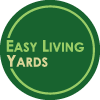
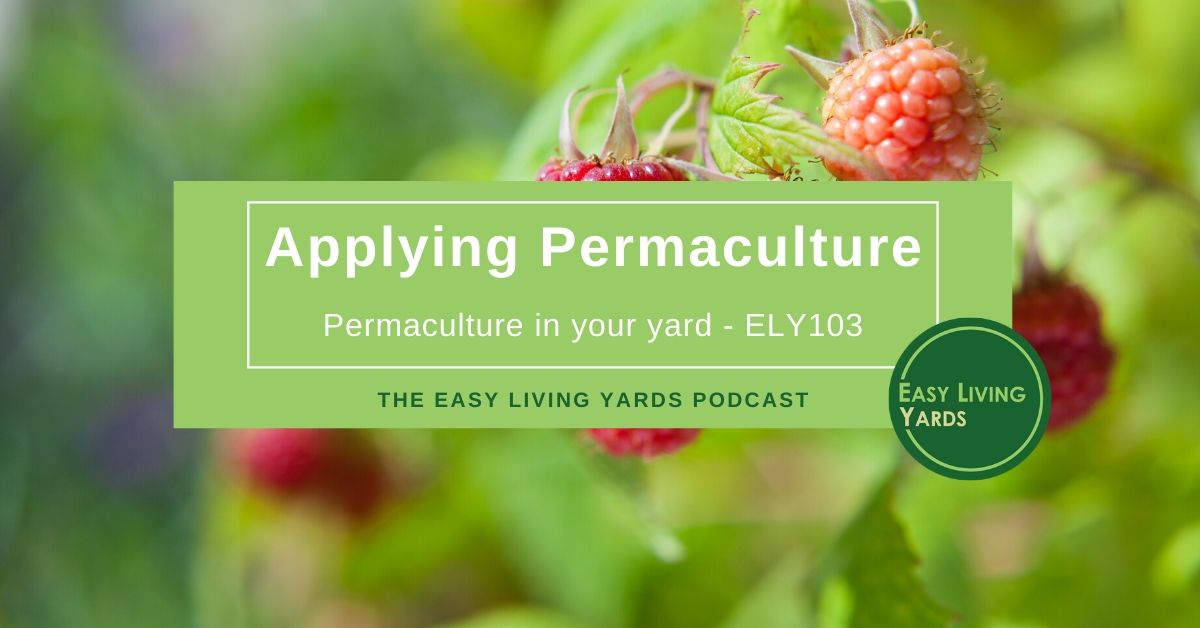
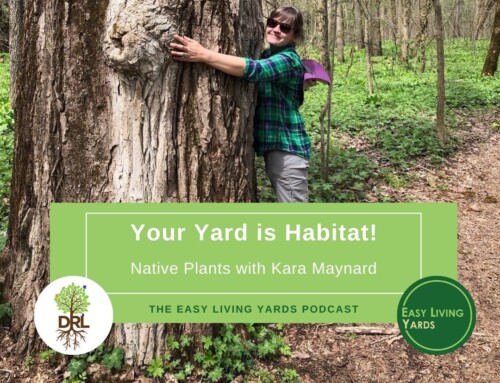

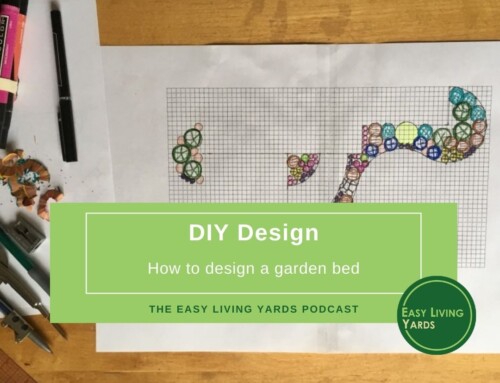

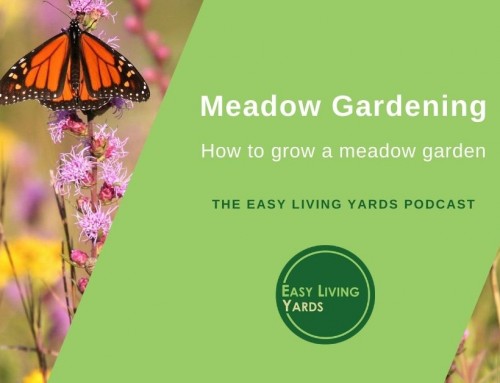
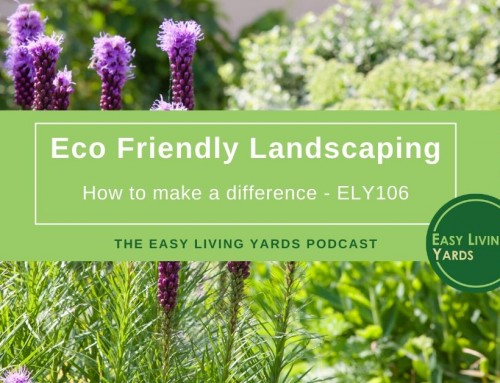
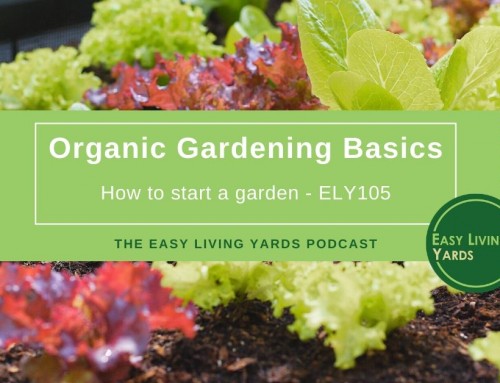
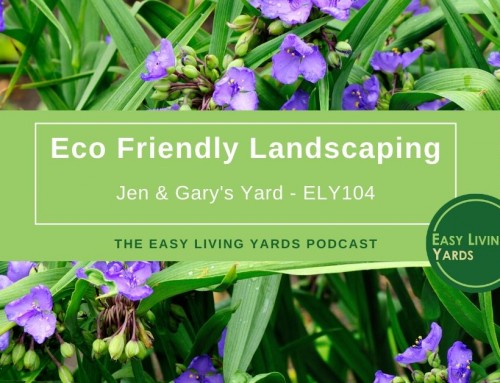
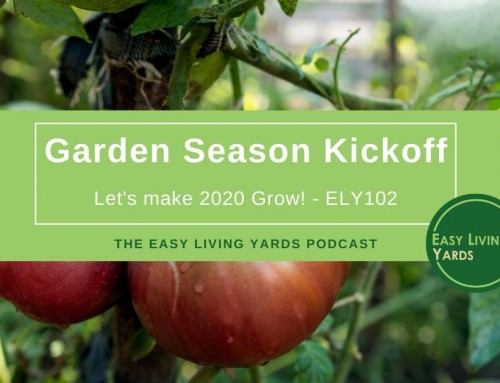
Leave A Comment